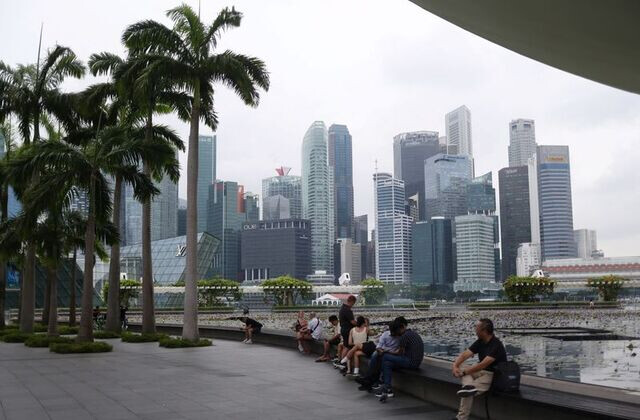
Singapore - Faced with a darkening economic outlook stemming from the United States' imposition of tariffs on key trading partners, Singapore is widely anticipated to further ease its monetary policy at its upcoming policy review next week. This potential move would follow a previous easing in January, signaling a proactive stance by the city-state in navigating global economic headwinds.
A Reuters poll of 10 economists revealed that 9 predict the Monetary Authority of Singapore (MAS) will implement accommodative measures. Unlike central banks that utilize interest rates, the MAS manages monetary policy by steering the Singapore dollar nominal effective exchange rate (S$NEER) within an undisclosed policy band. Adjustments are made by altering the slope, center, or width of this band.
Singapore's highly trade-dependent economy renders it particularly vulnerable to shifts in U.S. trade policy. The elevated tariffs on Chinese goods, initially imposed during the Trump administration, have disrupted supply chains across Asia, raising concerns about a potential erosion of Singapore's export competitiveness. These concerns are amplified by the ongoing uncertainties surrounding the future trajectory of U.S. trade relations under the current administration.
Adding to the rationale for monetary easing is the recent deceleration in Singapore's inflation. February's consumer price index registered its slowest pace of increase in four years, indicating subdued inflationary pressures. This low inflation environment provides the MAS with greater flexibility to pursue accommodative policies aimed at bolstering economic growth without the immediate risk of overheating the economy.
Analysts suggest that the MAS could opt to reduce the slope of the S$NEER policy band, implying a slower rate of appreciation for the Singapore dollar, or potentially lower the center of the band. Such measures would likely lead to a weaker Singapore dollar, offering a degree of respite for the export sector and potentially stimulating broader economic activity.
However, concerns linger regarding the potential downsides of monetary easing. A weaker currency could risk capital outflows and fuel imported inflation, particularly given Singapore's reliance on imports for a significant portion of its consumption needs. Consequently, the MAS is expected to undertake a careful balancing act, meticulously weighing global economic developments against domestic economic indicators before finalizing its policy decision.
The forthcoming monetary policy announcement by the MAS will be closely watched by regional economies and global financial markets alike, serving as a barometer for how trade-reliant nations are responding to the evolving landscape of international trade and economic uncertainty. Market participants will be scrutinizing the MAS's statement for clues regarding the extent of the easing and its assessment of the risks and opportunities facing the Singaporean economy in the near to medium term.
[Copyright (c) Global Economic Times. All Rights Reserved.]



























